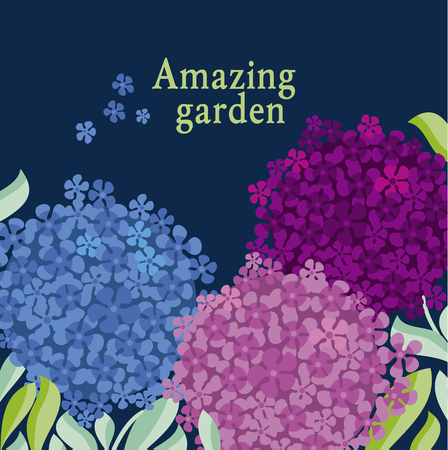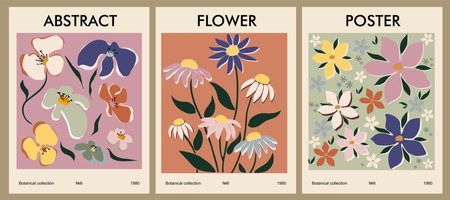Introduction to Annuals in the American Garden
Annual flowers have played a dynamic role in shaping the look and feel of American gardens, offering bursts of color and seasonal excitement that perennial plants alone often can’t provide. These one-season wonders, which complete their life cycle within a single year, quickly found favor with American gardeners eager for quick, vibrant results. In the early days of American garden culture, annuals were valued not only for their beauty but also for their adaptability—thriving in diverse climates across the country and allowing families to refresh their landscapes each year. The flexibility and affordability of annuals made them especially appealing as home gardening became a cherished part of American life. Over time, the significance of annual flowers has grown, setting the stage for their central role in home landscaping and reflecting broader changes in design trends and cultural preferences.
Colonial Beginnings and Early Influences
When European settlers first arrived in North America, their approach to gardening—and especially to annual flowers—was shaped by a blend of necessity, tradition, and adaptation. Many colonists brought seeds from their homelands, hoping to recreate familiar landscapes and secure reliable sources of food and beauty. However, the unfamiliar climate and soil conditions forced them to rethink which annuals could truly thrive. At the same time, Indigenous peoples had long cultivated native plants for both practical and ceremonial purposes, contributing invaluable knowledge about local species and sustainable practices.
Exchange of Knowledge and Seeds
The gardens of early America became an intersection of Old World customs and New World wisdom. Colonists learned from Native Americans how to grow native annuals like sunflowers (Helianthus annuus) and marigolds (Tagetes spp.), while introducing European favorites such as sweet peas and calendulas. This sharing was not just practical; it was essential for survival, adding diversity to diets and resilience to gardens.
Main Annual Flowers: Colonial & Indigenous Origins
| Plant Name | Origin | Typical Use in Early Gardens |
|---|---|---|
| Sunflower (Helianthus annuus) | Indigenous/North American Native | Food, dye, ornamental |
| Sage (Salvia officinalis) | European Import | Culinary herb, medicinal, border flower |
| Sweet Pea (Lathyrus odoratus) | European Import | Scented ornamental, cottage gardens |
| Marigold (Tagetes spp.) | Indigenous/Native & Introduced Varieties | Pest deterrent, ceremonial, border flower |
| Nasturtium (Tropaeolum majus) | South American Origin (introduced via Europe) | Culinary use (leaves/flowers), vibrant color in beds |
Cultural Adaptation in Garden Design
The colonial garden was not just a patchwork of transplanted traditions—it was a living experiment. Settlers often planted annuals in geometric beds or kitchen plots near the home for easy access. Meanwhile, Indigenous influence encouraged more naturalistic layouts that mimicked native ecosystems. Over time, these approaches blended, creating the foundation for the uniquely American garden style that values both productivity and seasonal beauty.

3. Victorian Era and the Flourishing of Flower Beds
The 19th century ushered in a golden age for American gardens, mirroring the ornate tastes of the Victorian era. During this period, gardening was not just a practical pursuit but a fashionable hobby embraced by households across the country. At the heart of this movement was the annual flower, which became an essential ingredient in creating dramatic, eye-catching displays.
Victorian gardeners were inspired by European trends, especially those from England, where “bedding out” became all the rage. Elaborate flower beds featuring meticulously arranged annuals—think petunias, geraniums, and marigolds—were designed to create vivid color patterns and geometric shapes. These bedding schemes transformed front yards into living tapestries, a testament to both horticultural skill and social status.
In America, public parks and private estates alike adopted these showy planting styles. The rise of seed catalogs and local nurseries made previously rare or exotic annuals available to a growing middle class. Home gardeners delighted in experimenting with bold color combinations and intricate layouts, often guided by popular garden manuals of the day.
This era also saw the introduction of mass plantings, where hundreds or even thousands of annuals would be planted in synchronized bloom cycles to ensure a continuous riot of color throughout the growing season. Annual flowers such as zinnias, salvias, and snapdragons found their way into nearly every well-tended plot, prized for their long-lasting blooms and ability to thrive in diverse American climates.
The Victorian love affair with annual flowers fundamentally shaped how Americans approached garden design. These lush, decorative flower beds set the stage for future trends—proving that with creativity and effort, any yard could become a showpiece that reflected both personal taste and cultural values.
4. Modern Landscape Movements and Ecological Shifts
The story of annual flowers in American gardens took a remarkable turn in the 20th and 21st centuries, as shifting social values and environmental awareness began to shape design choices. Key trends like the Victory Garden movement during World War II, the rise of suburban lawns, and the more recent emphasis on pollinator-friendly landscapes have all influenced how Americans use annuals in their outdoor spaces.
Victory Gardens: Functional Beauty
During World War II, millions of Americans embraced “Victory Gardens” to support the war effort by growing their own food. Annuals played a dual role: many edible crops such as tomatoes and beans are grown as annuals, but even ornamental annual flowers were tucked into these productive plots for color, morale, and companionship planting. These gardens blurred the lines between aesthetics and utility—a practical approach that still inspires home gardeners today.
Suburban Lawns and Decorative Borders
Postwar prosperity led to the boom of suburbia, where manicured lawns became symbols of the American Dream. Here, annuals found a new place—lining walkways, decorating foundation beds, or filling containers on porches. Bright petunias, marigolds, and impatiens became staples for instant curb appeal, easily swapped out each season for fresh colors. The following table illustrates the changing roles of annuals from the Victory Garden era to suburban landscapes:
| Era | Main Use of Annuals | Popular Varieties |
|---|---|---|
| 1940s (Victory Gardens) | Edible crops & companion planting | Beans, tomatoes, nasturtiums, calendula |
| 1950s-1990s (Suburbia) | Ornamental borders & lawn accents | Petunias, marigolds, zinnias, impatiens |
| 2000s-Present (Ecological focus) | Pollinator support & native-inspired designs | Sunflowers, cosmos, milkweed, bachelor’s button |
Pollinator-Friendly and Native-Inspired Plantings
The 21st century has seen a significant shift toward sustainability and biodiversity in garden design. As awareness grows about declining bee and butterfly populations, annuals are increasingly chosen for their ecological benefits. Gardeners now select varieties that attract pollinators or mimic native wildflower meadows—think sunflowers for bees or cosmos for butterflies—blending beauty with purpose.
A New Chapter for Annuals
From boosting wartime resilience to providing cheerful color in suburbia to supporting local ecosystems today, annual flowers continue to adapt alongside American values. Their quick growth and adaptability make them perfect candidates for experimentation as gardeners respond to changing climates and cultural priorities.
5. Popular Annuals and Iconic Varieties
Throughout American garden history, certain annual flowers have earned a special place in our hearts and landscapes. These favorites—like marigolds, petunias, zinnias, and cosmos—not only add bursts of color but also reflect evolving tastes, gardening trends, and even cultural shifts over the decades.
Marigolds: From Practical to Beloved
Marigolds have long held a spot in American gardens for their vibrant yellows and oranges, but also for their reputation as natural pest deterrents. Early settlers valued their hardiness and utility in vegetable plots, while modern gardeners appreciate their cheerful blooms that last from spring until frost. Over time, marigolds have transitioned from practical companions to ornamental staples in flower beds and containers across the country.
Petunias: A Symbol of Innovation
Introduced to the U.S. in the 19th century, petunias quickly gained popularity thanks to their versatility and the explosion of new colors created by plant breeders. By the mid-20th century, petunias became synonymous with suburban front yards, window boxes, and hanging baskets. Today’s gardeners still treasure them for their easy care and nonstop blooms, making them a classic choice for annual displays.
Zinnias: Brightening Up Borders
Zinnias are another annual that has captured the American imagination. Native to Mexico but embraced by U.S. gardeners since the late 1800s, zinnias offer an incredible range of shapes and hues. Their resilience to heat and drought made them especially popular during periods of water restriction or in southern gardens. Zinnias now serve as a go-to flower for pollinator gardens, children’s plots, and anyone seeking reliable summer color.
Cosmos: The Wildflower Favorite
With their airy foliage and daisy-like blossoms, cosmos bring a wildflower charm that has enchanted generations of gardeners. Especially beloved in cottage gardens and prairie-inspired plantings, cosmos thrive in poor soils and attract butterflies—a bonus for eco-conscious landscapers. Their informal beauty has helped shift American garden design toward more naturalistic styles over recent decades.
The Evolution Continues
These iconic annuals—marigolds, petunias, zinnias, cosmos—tell the story of how American gardens have changed over time. Each flower reflects not just horticultural innovation but also broader shifts in design preferences, environmental awareness, and cultural identity. As new varieties continue to emerge, these classics remain central to our seasonal plantings—proof that some favorites never go out of style.
6. The Future of Annuals in American Garden Design
As we look ahead, the role of annual flowers in American gardens is evolving alongside changing values and environmental priorities. Today’s gardeners are increasingly drawn to sustainable gardening practices, prompting a shift away from purely decorative displays toward more ecologically responsible choices.
Sustainable Gardening and Eco-Friendly Choices
The future of annuals lies in their integration into sustainable landscapes. Gardeners are seeking low-impact cultivation methods—such as organic soil amendments, water-wise irrigation, and reduced pesticide use—to ensure that annuals contribute positively to the environment. Composting spent annuals and using mulch from garden trimmings help close the loop, making flower beds both beautiful and earth-friendly.
Native Annual Selections for Biodiversity
Another emerging trend is the embrace of native annuals. By choosing plants that are indigenous to North America, gardeners can support local pollinators, birds, and beneficial insects. Native selections like Coreopsis tinctoria (plains coreopsis), Rudbeckia hirta (black-eyed Susan), and Monarda citriodora (lemon beebalm) provide seasonal color while strengthening regional ecosystems. These wildflower-inspired beds reflect a renewed appreciation for natural beauty and resilience.
Creative Uses in Contemporary Landscapes
Annuals continue to inspire creativity in modern garden design. Designers are experimenting with bold color blocking, mass plantings, and mixed textures to create dynamic focal points in urban yards and suburban landscapes alike. Containers on porches and patios burst with personality thanks to trending combos of edible and ornamental annuals. In public spaces, “meadow-style” plantings blend annuals with perennials and grasses for a relaxed, naturalistic effect that’s both low-maintenance and visually striking.
A Vision Rooted in Tradition and Innovation
Looking forward, the future of annual flowers in American gardens will balance cherished traditions with innovative approaches. Whether woven into pollinator pathways or showcased in artistic arrangements, annuals promise to remain an essential part of our outdoor living spaces—reminding us that every season brings new opportunities for beauty, stewardship, and creative expression.


